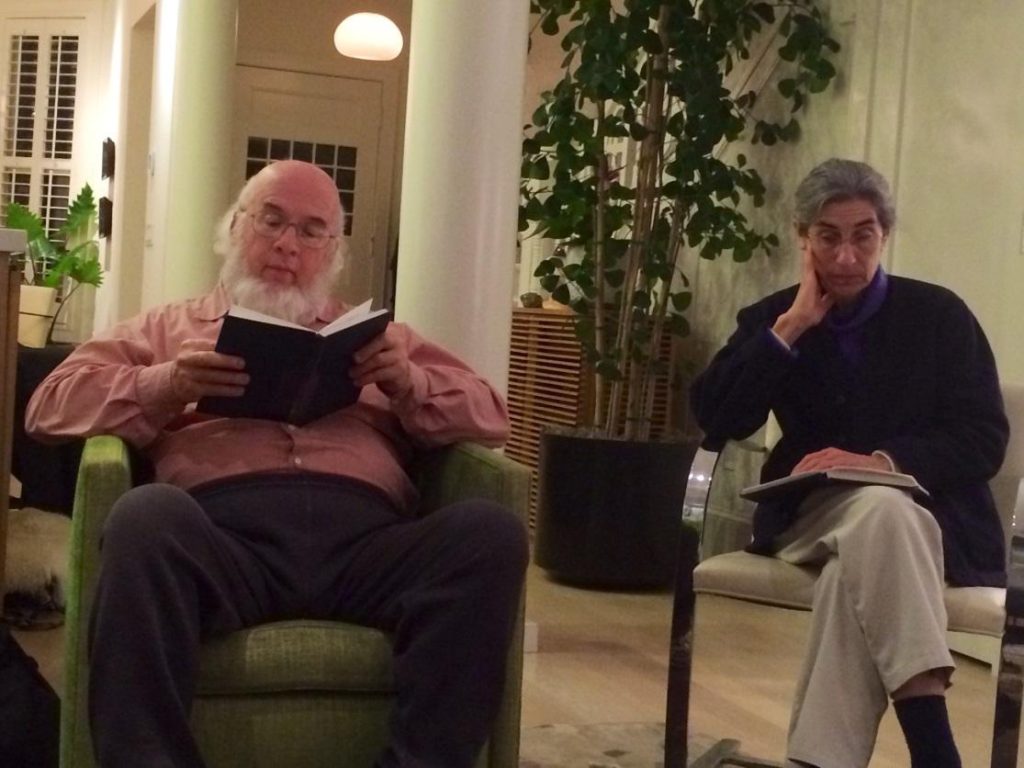In 1966, Lexie Ahrens (1923-2006), a retired Waldorf School teacher from Sacramento, California) established the Grand Piano at the hay days of the Flower Power era and in the restaurant was a true Steinway concert grand piano where only selected guests were allowed to play the piano.
Many celebrities paid her a visit and she was often called the “Mother of the Children of the Rainbow.” People like the Beatles would walk in and out and almost any well-known rock star or Hippy Dignitary would frequent the Grand Piano.
In the back of the restaurant were several couches and an extensive library with books by Rudolf Steiner and important anthroposophic authors.
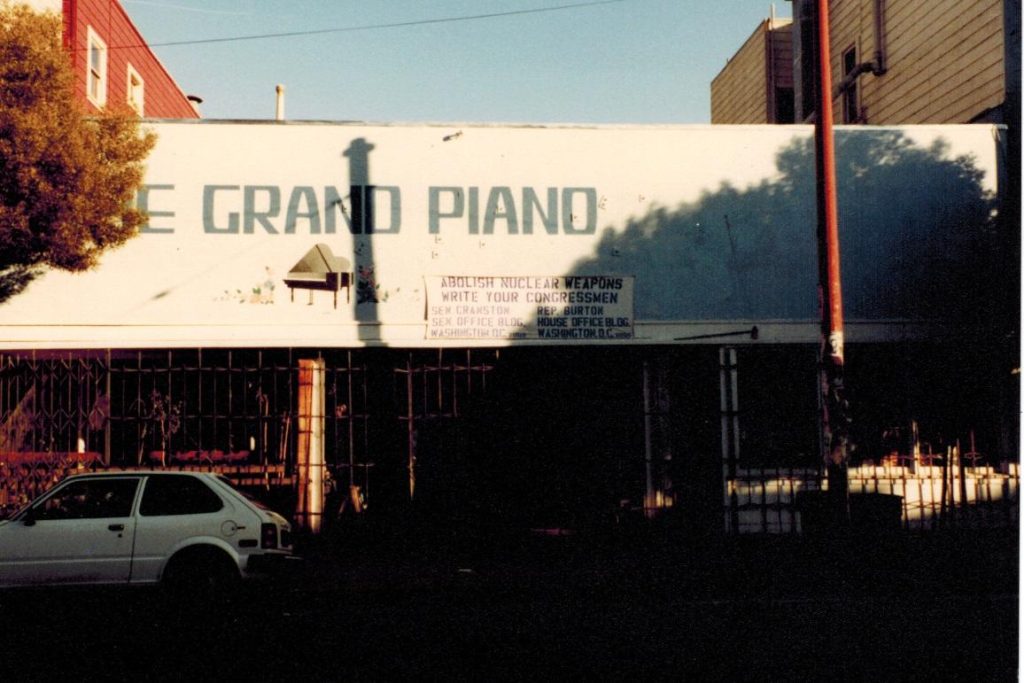
The Grand Piano at 1672 Haight Street was a very (we might say world-) famous “All Classical Music” coffee shop and restaurant to hang out. The picture was taken by Robert Gorter in 1981

The Grand Piano at the 1600 block was located (on purpose) in the very heart of the Haight/Ashbury district.



At the front door of Janis Lyn Joplin (January 19, 1943 – October 4, 1970)
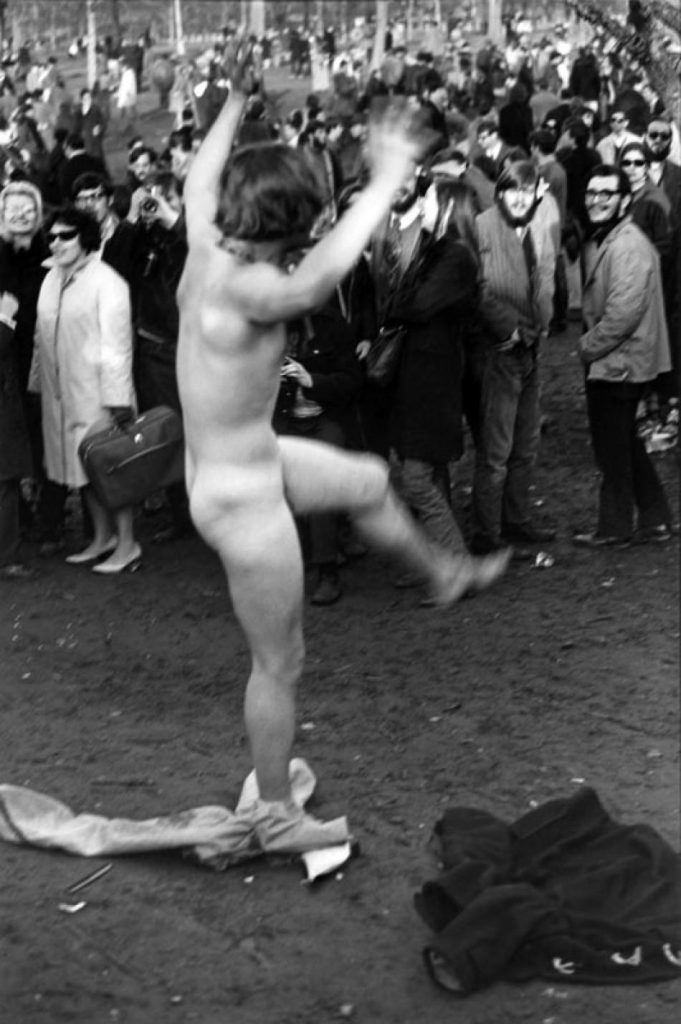
Typical scene in Golden Gate Park where the “Children of the Rainbow” would experiment with breaking taboos and shake the basis of (Western) society
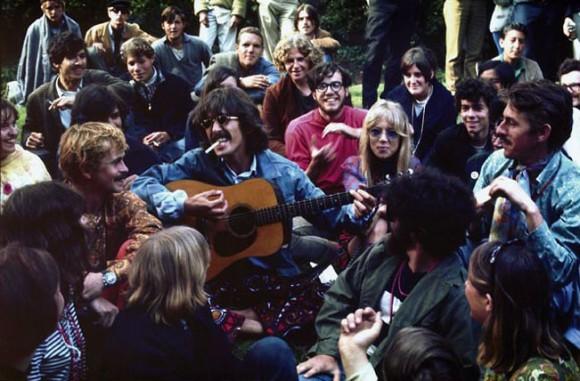
George and Pattie Harrison (Beatles) in Haight-Ashbury, San Francisco, 7 August 1967
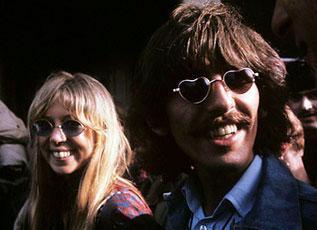
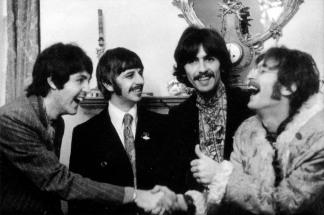
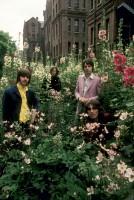
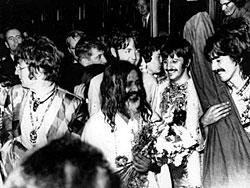
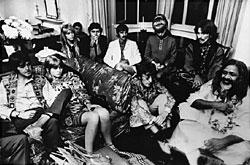
The Beatles with Maharish Mahesh Yogi 1967
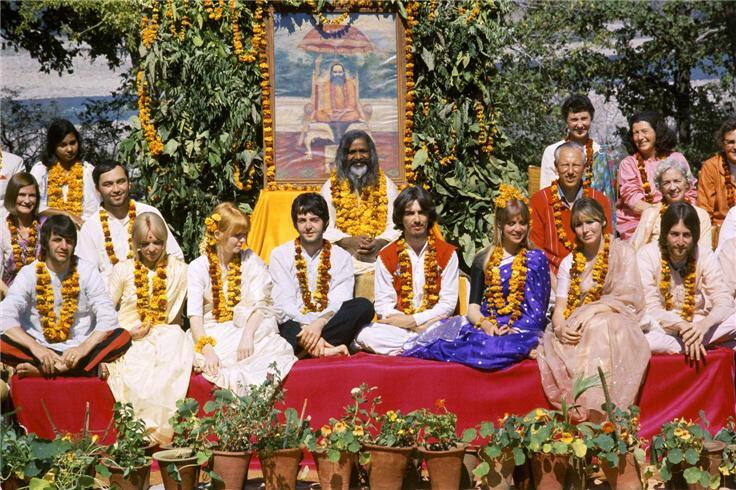
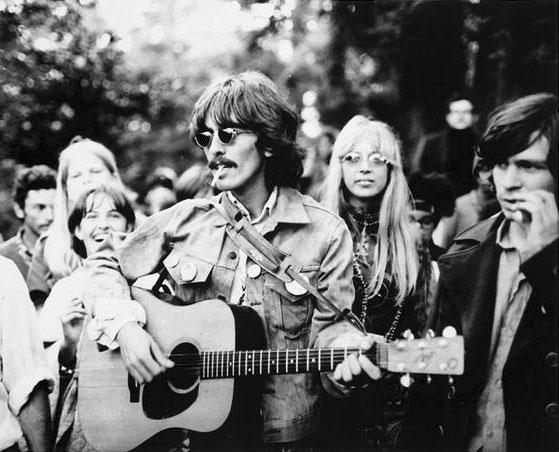
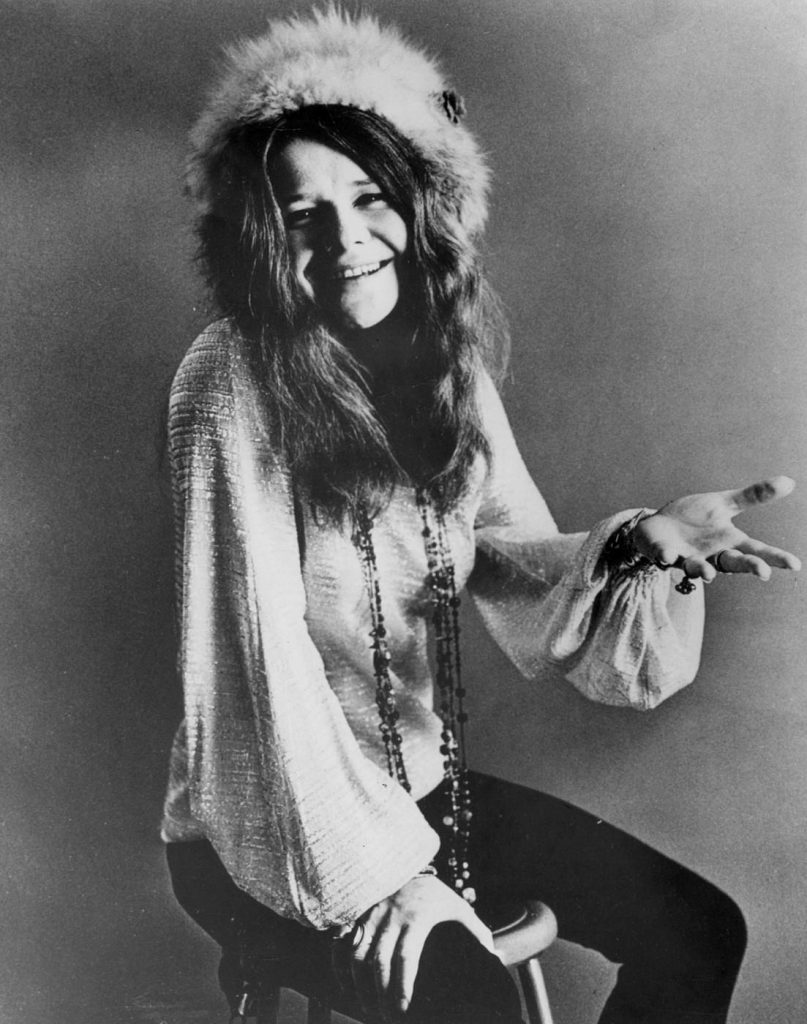
Janis Lyn Joplin (January 19, 1943 – October 4, 1970) was an American singer-songwriter who first rose to fame in the late 1960s as the lead singer of the psychedelic-acid rock band Big Brother and the Holding Company, and later as a solo artist with her own backing groups, The Kozmic Blues Band and The Full Tilt Boogie Band.
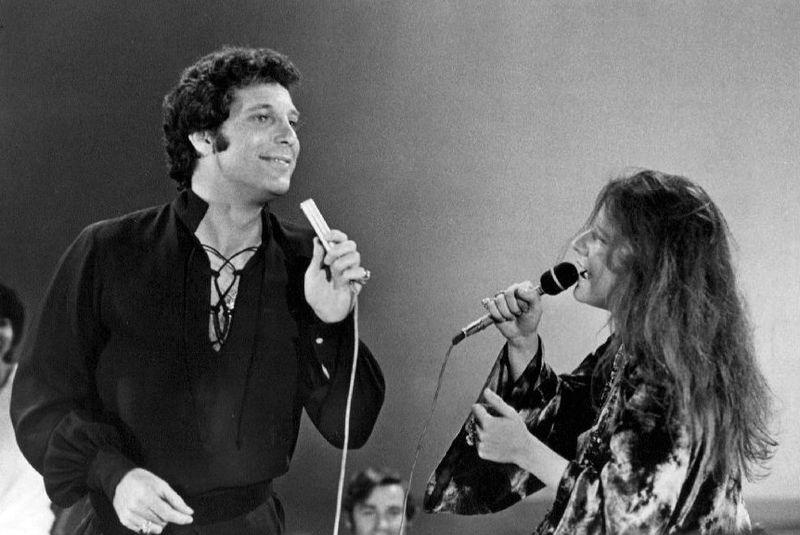
(November 1969)
She was one of the more popular acts at the Monterey Pop Festival and later became one of the major attractions to the Woodstock festival and the Festival Express train tour.
Joplin charted five singles, and other popular songs from her four-year solo career include “Down on Me”, “Summertime”, “Piece of My Heart”, “Ball ‘n’ Chain”, “Maybe”, “To Love Somebody”, “Kozmic Blues”, “Work Me, Lord”, “Cry Baby”, “Mercedes Benz”, and her only number one hit, “Me and Bobby McGee”.
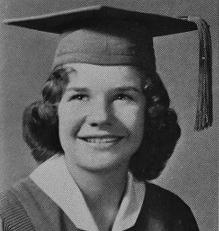
Joplin was well known for her performing abilities, and her fans referred to her stage presence as “electric”. At the height of her career, she was known as “The Queen of Psychedelic Soul,” and became known as Pearl among her friends. She was also a painter, dancer and music arranger. Rolling Stone ranked Joplin number 46 on its list of the 100 Greatest Artists of All Time in 2004, and number 28 on its 2008 list of 100 Greatest Singers of All Time. She was inducted into the Rock and Roll Hall of Fame in 1995.
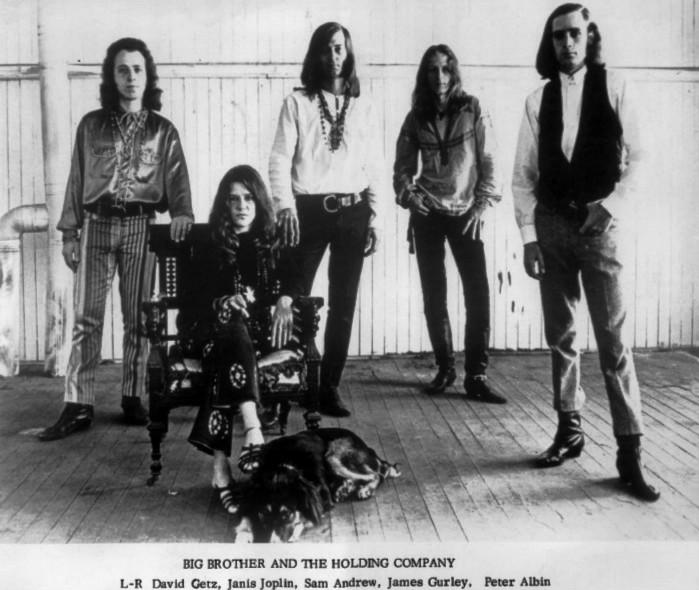
She told Dalton:
“ I’m a victim of my own insides. There was a time when I wanted to know everything … It used to make me very unhappy, all that feeling. I just didn’t know what to do with it. But now I’ve learned to make that feeling work for me. I’m full of emotion and I want a release, and if you’re on stage and if it’s really working and you’ve got the audience with you, it’s an oneness you feel.”
Among her last public appearances were two broadcasts of “The Dick Cavett Show.”
In a June 25, 1970 appearance, she announced that she would attend her ten-year high-school class reunion. When asked if she had been popular in school, she admitted that when in high school, her schoolmates “laughed me out of class, out of town and out of the state.” (Joplin had been voted “Ugliest Man on Campus” by frat boys during her university years)
In a subsequent “The Dick Cavett Show” broadcast on August 3, 1970, Joplin discussed her upcoming performance at the Festival for Peace to be held at Shea Stadium in Queens, New York, three days later.
Joplin’s last public performance, with the Full Tilt Boogie Band, took place on August 12, 1970, at the Harvard Stadium in Boston. The Harvard Crimson gave the performance a positive, front-page review, despite the fact that Full Tilt Boogie had performed with makeshift sound amplifiers after their regular equipment was stolen in Boston.
When Joplin was not at Sunset Sound Recorders, she liked to drive her Porsche over the speed limit “on the winding part of Sunset Blvd.,” according to a statement, made by her attorney Robert Gordon in 1995 at the Rock and Roll Hall of Fame induction ceremony.
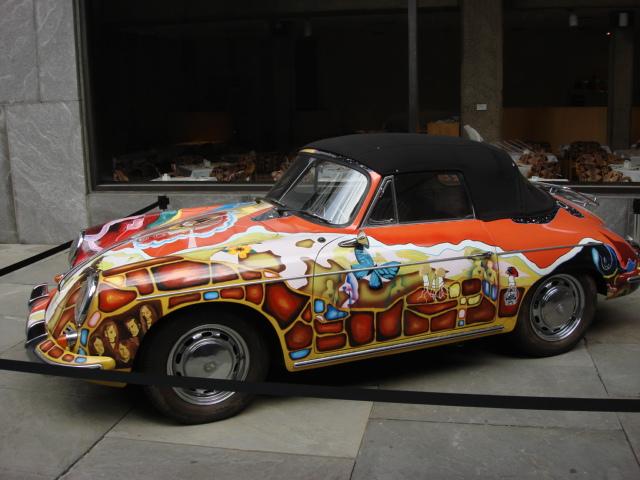
Friedman wrote that the only Full Tilt Boogie member who rode as her passenger, Ken Pearson, often hesitated to join her, though he did on the night she died. He was not interested in experimenting with hard drugs.
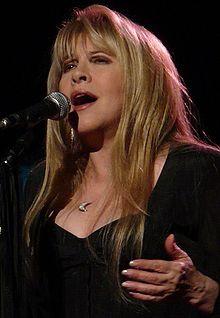
Stephanie Lynn “Stevie” Nicks is an American singer-songwriter, who in the course of her work with Fleetwood Mac and her extensive solo career, has produced over forty Top 50 hits and sold over 140 million albums. She was deemed “The Reigning Queen of Rock and Roll” and one of the “100 Greatest Singers of All Time” by Rolling Stones. As a member of Fleetwood Mac, she was inducted into the Rock and Roll Hall of Fame in 1998. As a solo artist, she has garnered eight Grammy Award nominations and, with Fleetwood Mac, a further five.
Stevie Nicks reports on Janice Joplin:
“But then Janis got up on that stage with her band, and this woman who was screaming at me only moments before suddenly became my new hero. Janis Joplin was not what anyone would call a great beauty, but she became beautiful because she made such a powerful and deep emotional connection with the audience. I didn’t mind the feathers and the bell-bottom pants either. Janis didn’t dress like anyone else, and she definitely didn’t sing like anyone else.
Janis put herself out there completely, and her voice was not only strong and soulful, it was painfully and beautifully real. She sang in the great tradition of the rhythm & blues singers that were her heroes, but she brought her own dangerous, sexy rock & roll edge to every single song.
She really gave you a piece of her heart. And that inspired me to find my own voice and my own style.”
Janice Joplin would frequent the Grand Piano as well and Lexie Ahrens and Janice became quickly best friends.
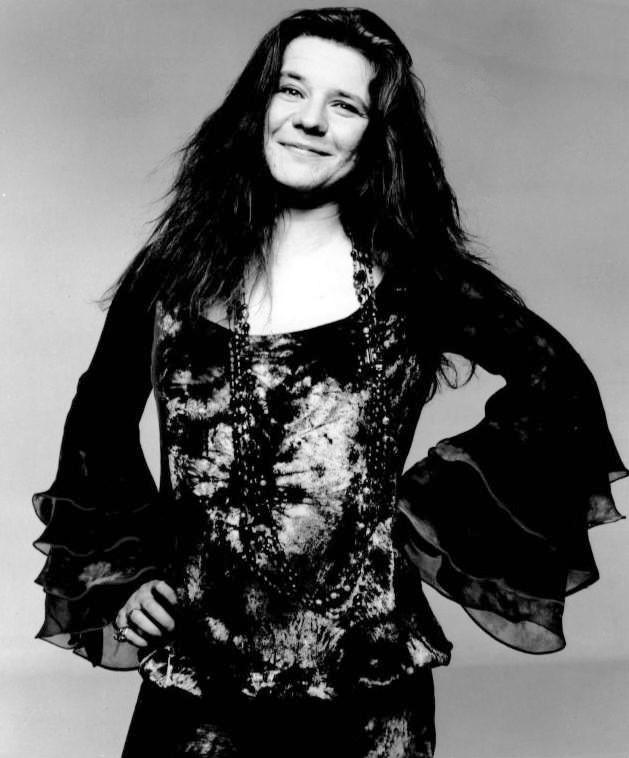
Unfortunately, Janice died from an overdose of heroin. Her Victorian house was located four blocks away from the Grand Piano.
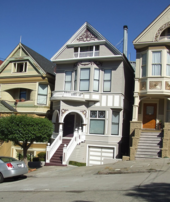
Joplin’s house at 122 Lyon Street in Haight-Ashbury in San Francisco.
She lived there in the 1960s with her boyfriend Country Joe McDonald
“Flower Power” was a slogan used during the late 1960s and early 1970s as a symbol of passive resistance and non-violence ideology. It is rooted in the opposition movement to the US led Vietnam War. The expression was coined by the American beat poet Allen Ginsberg in 1965 as a means to transform war protests into peaceful affirmative spectacles.
Hippies embraced the symbolism by dressing in clothing with embroidered flowers and vibrant colors, wearing flowers in their hair, and distributing flowers to the public, becoming known as flower children. The term later became generalized as a modern reference to the hippie movement and the so-called counterculture of drugs, psychedelic music, psychedelic art and social permissiveness.
Flower Power originated in Berkeley, California as a symbolic action of protest against the Vietnam War. In his November 1965 essay titled “How to Make a March/Spectacle,” Ginsberg advocated that protesters should be provided with “masses of flowers” to hand out to policemen, press, politicians and spectators.
The use of props like flowers, toys, flags, candy and music were meant to turn anti-war rallies into a form of street theater thereby reducing the fear, anger and threat that is inherent within mass protests. In particular, Ginsberg wanted to counter the “specter” of the Hells Angels motorcycle gang who supported the war, equated war protesters with communists and had threatened to violently disrupt planned anti-war demonstrations at the University of California, Berkeley. Using Ginsberg’s methods, the protest received positive attention and the use of “flower power” became an integral symbol in the counterculture movement.
By late 1966, the Flower Power method of “guerilla theater” had spread from California to other parts of the United States and Western Europe. The Bread and Puppet Theater in New York City staged numerous protests which included handing out balloons and flowers with their anti-war literature.
Workshop in Nonviolence (WIN), a magazine published by New York activists, encouraged the use of Flower Power. In May 1967, Abbie Hoffman organized the Flower Brigade as an official contingent of a New York City parade honoring the soldiers in Vietnam. News coverage captured Flower Brigade participants, who carried flowers, flags and pink posters imprinted with LOVE, being attacked and beaten by bystanders. In response to the violence, Hoffman wrote in WIN magazine, “Plans are being made to mine the East River with daffodils. Dandelion chains are being wrapped around induction centers…. The cry of ‘Flower Power’ echoes through the land. We shall not wilt.”
On the following Sunday in May 1967, WIN activists declared the Armed Forces Day as “Flower Power Day” and held a rally in Central Park to counter the traditional parade. Turnout was low and, according to Hoffman, the rally was ineffective because guerilla theater needed to be more confrontational.
In October 1967, Hoffman and Jerry Rubin helped organize the March on the Pentagon using Flower Power concepts to create a theatrical spectacle. The idea included a call for marchers to attempt to levitate the Pentagon. When the marchers faced off against more than 2500 Army National Guard troops forming a human barricade in front of the Pentagon, demonstrators held flowers and some placed flowers in the soldier’s rifle barrels.
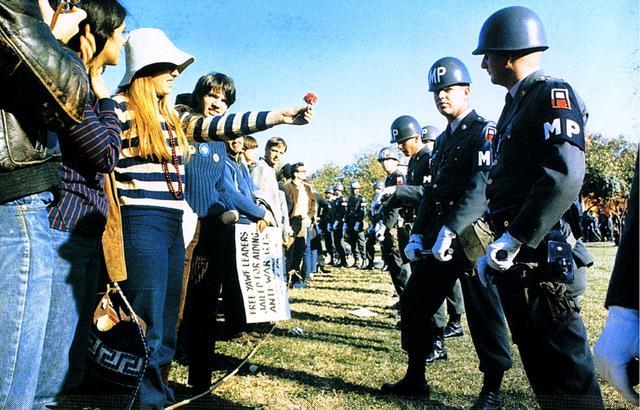
Photographs of flower-wielding protesters at the Pentagon March became seminal images of the 1960s anti-war protests.
The iconic center of the Flower Power movement was the Haight Ashbury district in San Francisco, California. By the mid-1960s, the area, marked by the intersection of Haight and Ashbury Streets, had become a focal point for psychedelic rock music. Musicians and bands like Jefferson Airplane, the Grateful Dead and Janis Joplin all lived a short distance from the famous intersection. During the 1967 Summer of Love, thousands of hippies gathered there, popularized by hit songs such as “San Francisco (Be Sure to Wear Flowers in Your Hair)”. A July 7, 1967, Time magazine cover story on “The Hippies: Philosophy of a Subculture,” and an August CBS News television report on “The Hippie Temptation” as well as other major media interest exposed the hippie subculture to national attention and popularized the Flower Power movement across the country and around the world.
The avante garde art of Milton Glaser, Heinz Edelmann, and Peter Max became synonymous with the flower power generation. Edelman’s illustration style was best known in his art designs for The Beatles’ 1968 animated film Yellow Submarine. Peter Max’s cover story in Life magazine (September 1969) as well as appearances on The Tonight Show Starring Johnny Carson and The Ed Sullivan Show, further established “flower power” style art into mainstream culture.
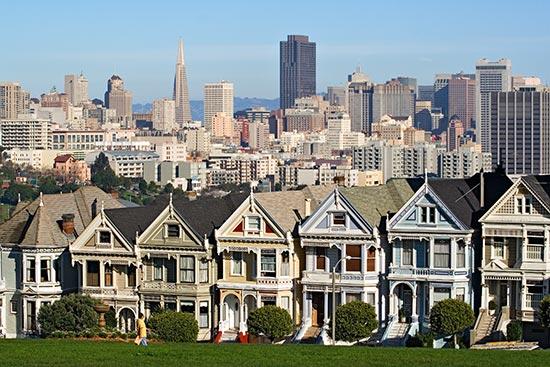
In the later 1960’s, Lexie Ahrens, as a retried Waldorf School Teacher, established the “Grand Piano” in Haight Street and had in the café and restaurant a large library of books by Rudolf Steiner and other mainly Anthroposophic literature. In addition, she established a study group where anybody who was sincerely interested was welcome. When Robert Gorter arrived in San Francisco, and the study group more than doubled in regular participants, the study group met at his house in McAllister Street in the Western Addition (Alamo Square).
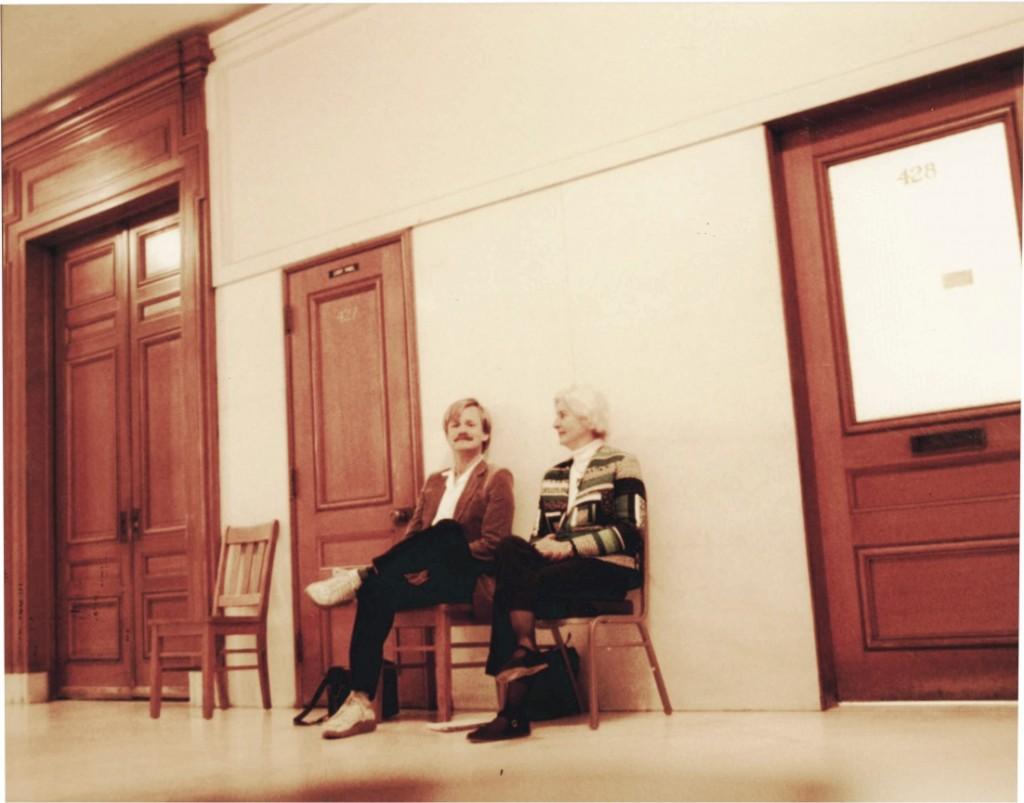
A study group on general anthroposophy was started by Lexi Ahrens in the early 1970’s and they would continue to meeting at the house of Robert Gorter at 1409 McAllister Street in San Francisco historic district once a week. Currently, the study group is about 45 years old and still very much alive and meeting every Wednesday evening with potluck at James’ house. Lexie Ahrens (in the middle), Ted Shuttock (far left), and Robert Gorter (on his knees in the front), Iris Parris (half visible behind Robert), and James Nunemacher (to the far right, cuddling the cat named Oedipus).
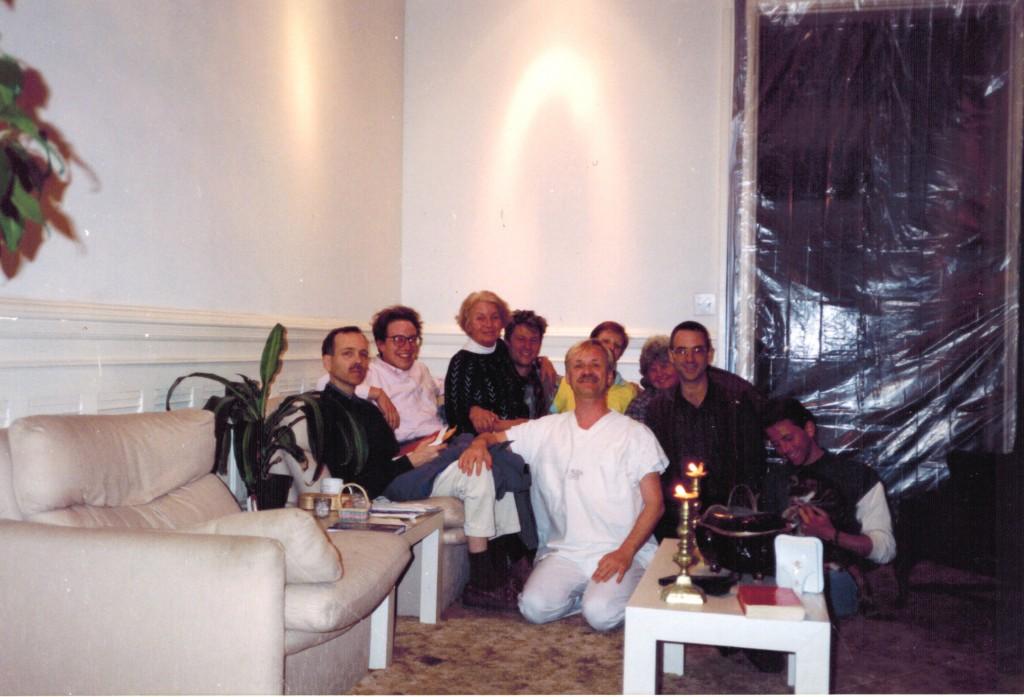
A few members of the study group on Anthroposophy that met once a week at the house of Robert Gorter at 1409 McAllister Street in the San Francisco Alamo Square historic district. Ted Shuttock (far left), Lexie Ahrens (on the leap of Ron), Melissa Key (next to Iris Parris in yellow T-shirt), and Robert Gorter (in white on his knees), James Nunemacher (with the cat Oedipus far right) ca. 1986
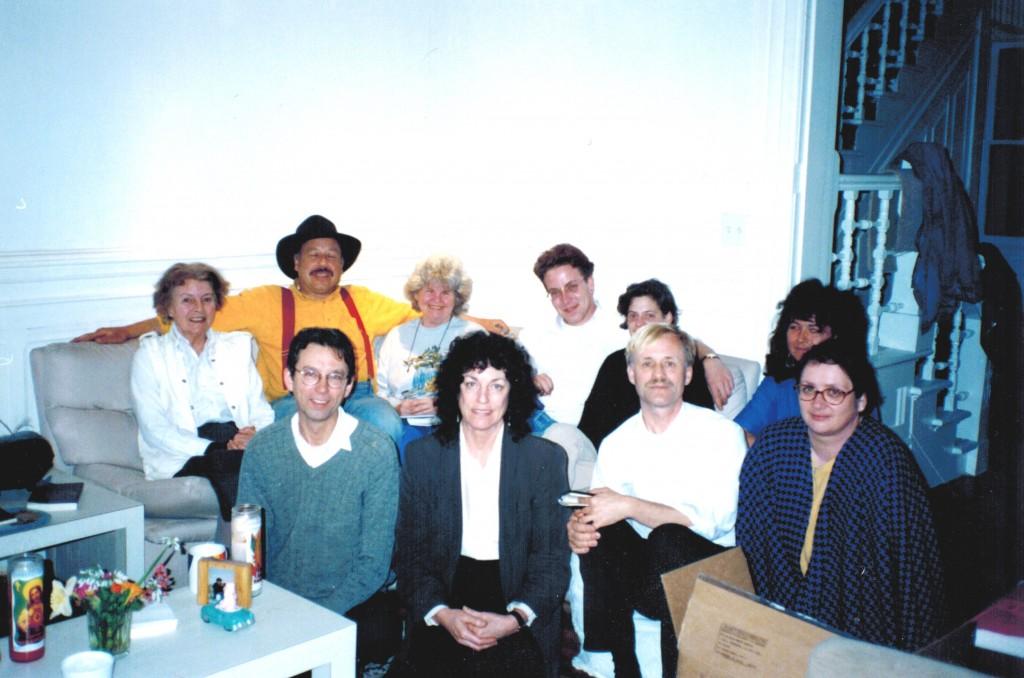
A few members of the study group on Anthroposophy that met once a week at the house of Robert Gorter at 1409 McAllister Street in the San Francisco Alamo Square historic district. Lexie Ahrens (far left), Melissa Key (middle next to man in yellow T-shirt), and Robert Gorter (third from the left). ca. 1990
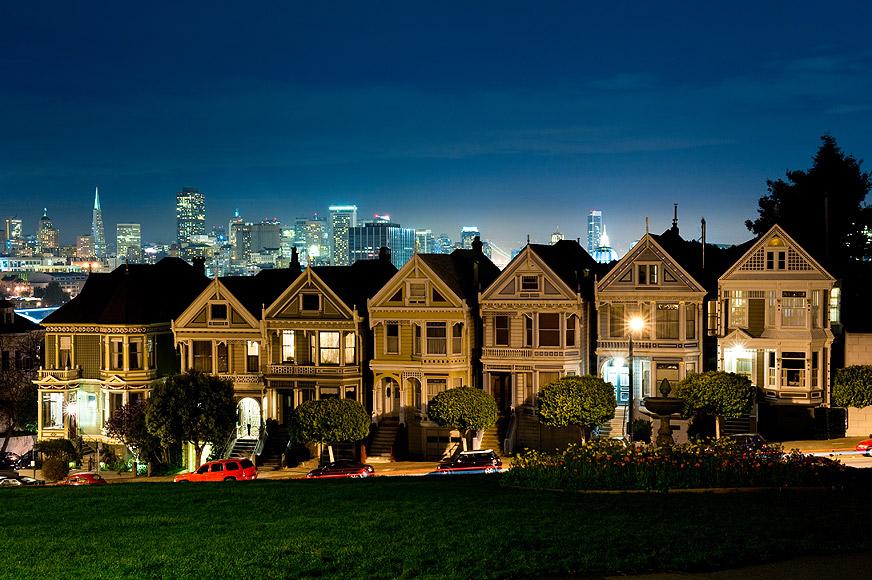
Historic Landmark Alamo Square, San Francisco, at night and where every Wednesday the study group would meet for pot luck and study
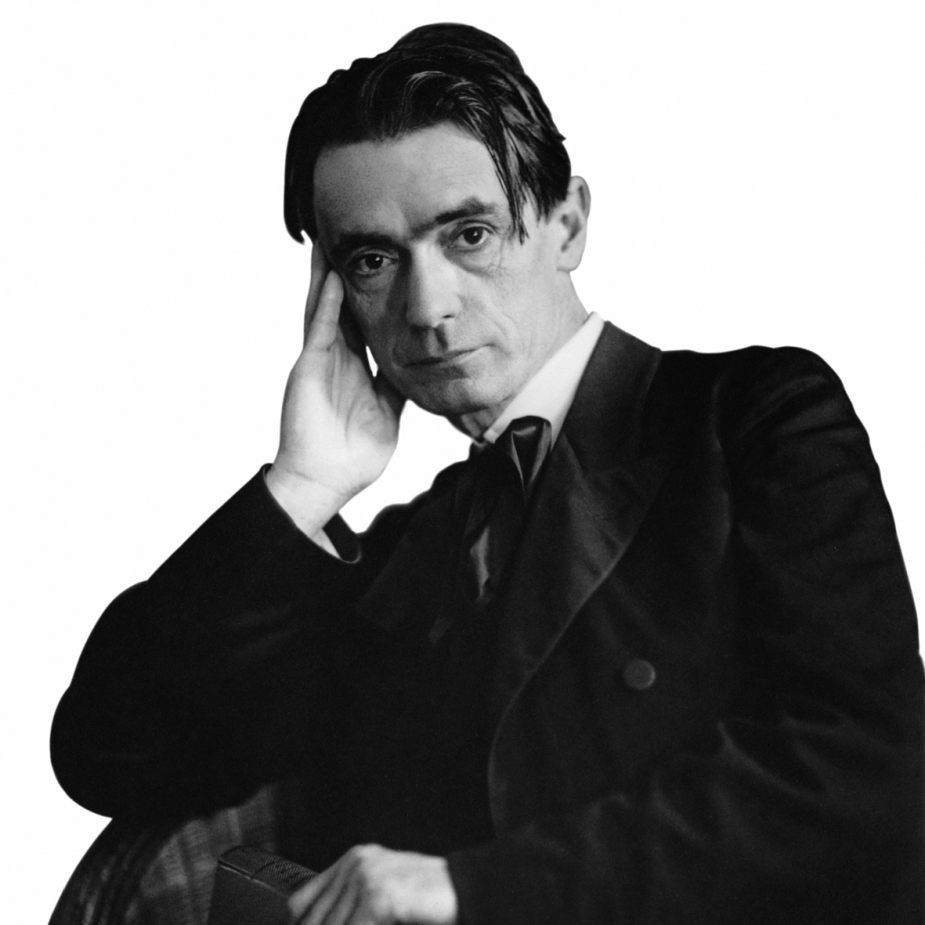
As of today (spring 2014), the study group is still going strong with “Die-Hards” like James and Melissay Kay (and Robert Gorter when he is around) and still meets every Wednesday at James Nunemacher’s house for potluck and study.

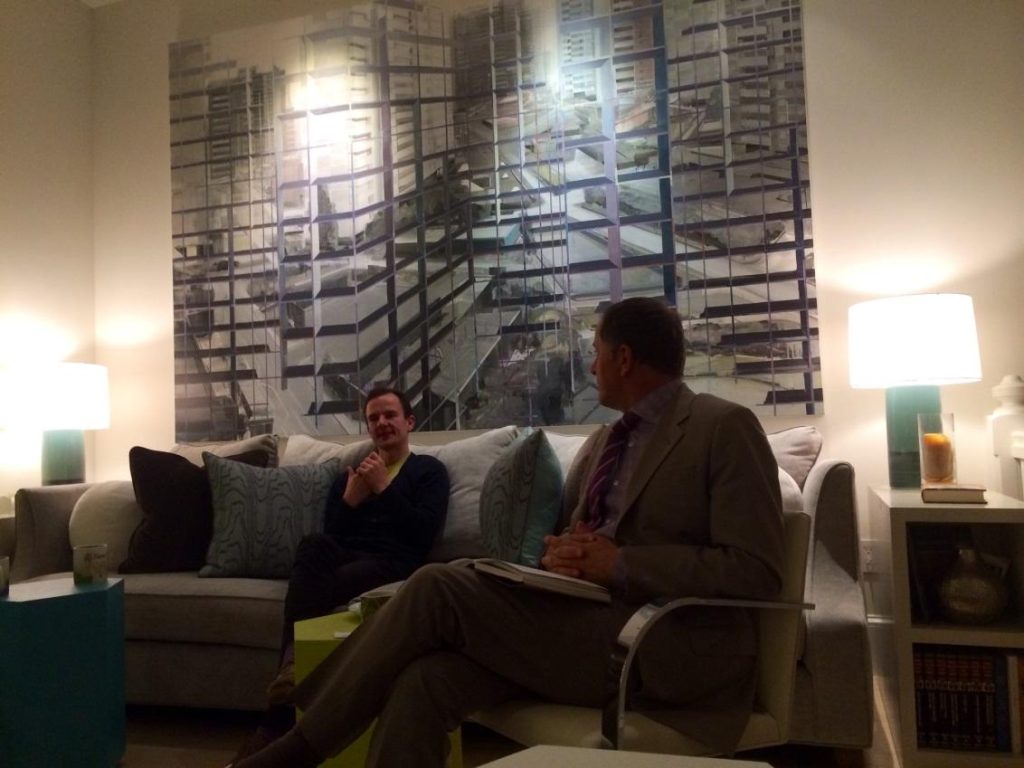
(San Francisco, February 2014)
